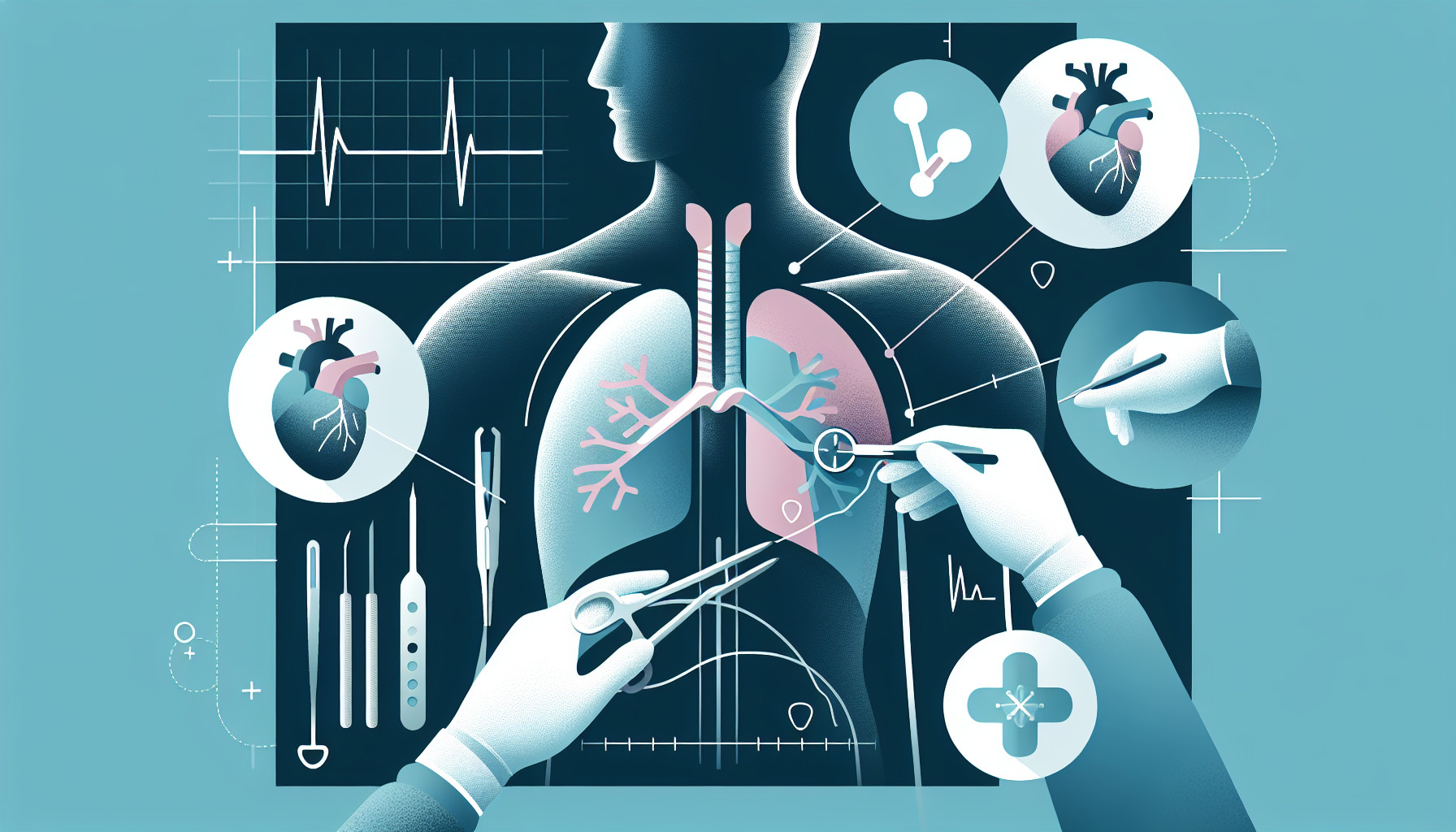Our Summary
This study looked at patients suffering from migraines to see if a condition known as thoracic outlet syndrome (TOS) was contributing to their headaches. TOS is a condition that occurs when blood vessels or nerves in the space between your collarbone and your first rib (thoracic outlet) are compressed. This can cause pain in your shoulders and neck
FAQs
- What is thoracic outlet syndrome (TOS)?
- How can thoracic outlet syndrome contribute to migraines?
- What are the symptoms of thoracic outlet syndrome?
Doctor’s Tip
.
A helpful tip a doctor might tell a patient about thoracic outlet syndrome surgery is to carefully follow post-operative instructions for proper healing and recovery. This may include physical therapy exercises to strengthen the muscles in the affected area, avoiding heavy lifting or strenuous activities, and keeping the surgical site clean and dry to prevent infection. It is also important to attend follow-up appointments with your doctor to monitor your progress and address any concerns.
Suitable For
, as well as numbness or tingling in your fingers.
Patients who are typically recommended for thoracic outlet syndrome surgery are those who have tried conservative treatments such as physical therapy, medication, and lifestyle changes without success. They may have severe symptoms such as persistent pain, weakness, or numbness that significantly impacts their daily life and function.
Additionally, patients who have a confirmed diagnosis of thoracic outlet syndrome through imaging studies such as MRI or ultrasound may be considered for surgery. It is important for patients to have a thorough evaluation by a healthcare provider specializing in TOS to determine the best course of treatment for their specific condition.
Timeline
, as well as numbness and tingling in your fingers.
Before surgery:
- Patient experiences symptoms such as shoulder and neck pain, numbness, and tingling in the fingers.
- Patient undergoes diagnostic tests such as imaging studies and nerve conduction tests to confirm the diagnosis of TOS.
- Patient may undergo physical therapy and medications to manage symptoms before considering surgery.
- Patient and surgeon discuss the risks and benefits of surgery and decide on the best treatment plan.
After surgery:
- Patient undergoes thoracic outlet syndrome surgery, which may involve removing a portion of the first rib or releasing the compressed blood vessels or nerves.
- Patient may experience pain and discomfort in the immediate post-operative period.
- Patient undergoes physical therapy to regain strength and range of motion in the affected arm and shoulder.
- Patient gradually resumes normal activities and experiences relief from symptoms such as shoulder and neck pain, numbness, and tingling in the fingers.
Overall, the timeline for a patient before and after thoracic outlet syndrome surgery involves a period of diagnosis and symptom management followed by surgical intervention and post-operative rehabilitation to improve symptoms and restore function.
What to Ask Your Doctor
, as well as numbness or tingling in your fingers.
- What are the potential risks and complications of thoracic outlet syndrome surgery?
- What is the success rate of thoracic outlet syndrome surgery in relieving symptoms?
- How long is the recovery period after thoracic outlet syndrome surgery?
- Will I need physical therapy or rehabilitation after surgery?
- What type of anesthesia will be used during the surgery?
- Are there any alternative treatments or non-surgical options for managing thoracic outlet syndrome?
- How long can I expect to be in the hospital after surgery?
- Will I need to make any lifestyle changes or modifications after thoracic outlet syndrome surgery?
- What is the long-term prognosis for someone who undergoes thoracic outlet syndrome surgery?
- Are there any restrictions or limitations I should be aware of following surgery?
Reference
Authors: Cha YH, Randall L, Weber J, Ahn S. Journal: Clin Anat. 2025 Apr;38(3):314-323. doi: 10.1002/ca.24242. Epub 2024 Nov 15. PMID: 39545467
